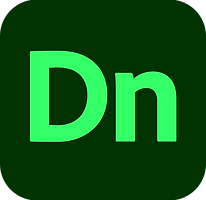Portfolio Heights
We've transformed the traditional portfolio into an architectural journey through augmented reality. Portfolio Heights invites you to explore and be inspired by a group of creatives investigating the boundaries of digital expression.

Crafting the Blueprint
Collaborative Project: AKA Group Project
Our group was tasked with conceptualizing and executing a unified project with few defined parameters. Through discussion and ideation, we developed Portfolio Heights—a virtual environment that synthesizes individual creativity with technological innovation.
Key project parameters we established:
-
Medium: Digital realm utilizing augmented reality (AR)
-
Accessibility: Universal access via mobile devices
-
Audience Interaction: Immersive exploration through QR code activation
-
Individual Expression: Personalized 3D spaces designed by each participant
We structured the project into five teams, each focusing on aspects of communication and development. Utilizing software for 3D modeling and Adobe Aero for AR implementation, we transformed our concept into a cohesive digital experience over a seven-week period.
The group cannot wait for you to explore the buildings. After your visit, we value your insights—please take a moment to share your thoughts in our Visitor Notes section.
Our Process.
The Heart of Portfolio Heights
This project was not just about learning software and new media techniques; it was a lesson in collaboration, problem-solving, and mutual support.
Here's how working together shaped our experience.
Team Dynamics
We divided into teams, each with specific roles, to ensure that every aspect of the project was covered. This structure taught us the importance of clear communication, delegation, and trust. We formed a cohesive unit tackling complex challenges.
Problem-Solving
Throughout the project, we encountered numerous obstacles, from technical issues with Adobe Dimension and Aero to the ambitious goal of creating a unified project concept. These challenges forced us to think critically, adapt, and find creative solutions. We learned that problem-solving is not just about fixing issues but also about anticipating them and working proactively to prevent them.
Supporting Each Other
One of the most valuable lessons was the art of supporting one another. When one student struggled with a design element or an AR implementation, others stepped in to offer guidance, share knowledge, or simply provide encouragement. This support system ensured no one felt left behind, and it fostered a sense of camaraderie and collective responsibility.
Self-Assessment
The project required us to constantly assess our own work and progress. We learned to critically evaluate our designs, our contributions to the team, and our ability to meet deadlines. This self-assessment was not just about identifying areas for improvement but also about recognizing our strengths and how we could leverage them for the benefit of the project.
Bringing Each Other Along
Perhaps the most significant lesson was understanding how to bring each other along so that the larger project could succeed. We realized that individual success was intertwined with the success of the group. This meant:
-
Mentoring: More experienced students mentored those less familiar with the tools, ensuring everyone could contribute effectively.
-
Feedback Loops: Regular feedback sessions allowed us to refine our work, learn from each other, and improve collectively.
-
Inclusivity: We made sure that every voice was heard, and every idea was considered, fostering an environment where everyone felt valued.



